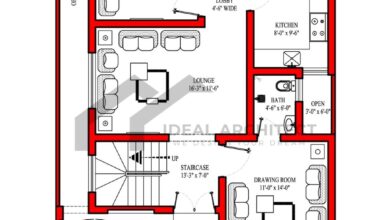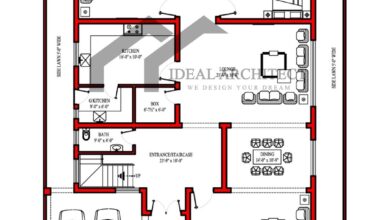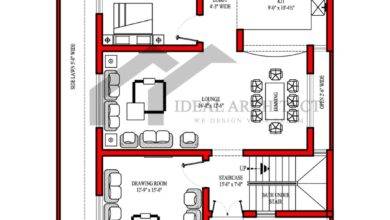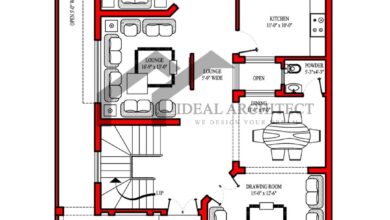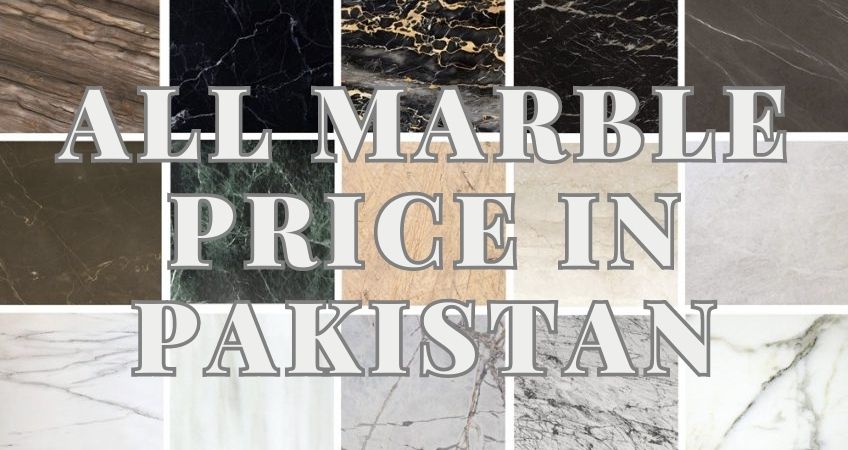
Marble is a valuable natural stone that has been used in construction and decoration for centuries. Pakistan is one of the world’s leading producers and exporters of marble, with a rich history and heritage in the industry. In this article, we will explore the current state of the marble industry in Pakistan, including its trends, challenges, and Marble Price in Pakistan or Marble Rate in Pakistan.
Introduction: Marble Price in Pakistan | Marble Rate in Pakistan
Marble is a type of metamorphic rock that is prized for its beauty, durability, and versatility. It is used in a wide range of applications, from building and construction to sculpture and interior decoration. Pakistan is one of the world’s leading producers and exporters of marble, with a long history and tradition in the industry. The Marble Price in Pakistan or Marble Rate in Pakistan country’s marble deposits are spread throughout its provinces, with significant reserves in the Balochistan, Khyber Pakhtunkhwa, and Punjab regions.

History of Marble in Pakistan
The use of marble in Pakistan dates back to ancient times, with evidence of its use in the Indus Valley Civilization. The Mughal Empire, which ruled over the region from the 16th to the 18th centuries, was particularly fond of marble and used it extensively in their buildings and monuments for Marble Price in Pakistan or Marble Rate in Pakistan. The Taj Mahal, one of the most famous examples of Mughal architecture, is built entirely of white marble imported from Makrana, India.
Types of Marble in Pakistan and Marble Price in Pakistan or Marble Rate in Pakistan
Pakistan has a wide variety of marble deposits, with over 70 types of marble found in the country. Some of the most popular types include Marble Price in Pakistan or Marble Rate in Pakistan:
- Black and Gold
- Verona Beige
- Botticino
- Sahara Gold
- Indus Gold
- Badal Grey
- Ziarat White
- Burma Teak
- Black Zebra
- Sunny Grey
Each type of marble has its unique characteristics and color variations, making them suitable for different applications and designs for Marble Price in Pakistan or Marble Rate in Pakistan.
| Marble Type | Rate Per Feet |
|---|---|
|
Tavera
|
Rs.61
|
|
Split and Re-Sawn
|
Rs.68
|
|
Sunny White
|
Rs.79
|
|
Zebra
|
Rs.68
|
|
Ziarat Grey
|
Rs.75
|
|
Black Granite
|
Rs.68
|
|
China Verona
|
Rs.85
|
Marble Mining in Pakistan and Marble Price in Pakistan or Marble Rate in Pakistan
Marble mining is a labor-intensive process that involves extracting marble from quarries using heavy machinery, explosives, and hand tools. The mining process is often hazardous and can pose significant risks to workers’ health and safety. Pakistan has several marble mining sites, including the Makrana Marble Mines in Balochistan and the Khyber Marble Mines in Khyber Pakhtunkhwa.
| Marble Type | Rate Per Feet |
|---|---|
|
Black Galaxy
|
Rs.1550
|
|
Botticino
|
Rs.140
|
|
Silky Black
|
Rs.85
|
|
Tropical Grey
|
Rs.410
|
|
Ziarat White
|
Rs.90
|
|
Badal
|
Rs.40
|
|
Grey Emperador
|
Rs.46
|
Marble Processing in Pakistan
Once extracted, marble is processed into various products, including slabs, tiles, and blocks. The processing involves cutting, polishing, and finishing the marble to the desired shape and size. Pakistan has several marble processing plants that employ modern machinery and technology to produce high-quality marble products in Marble Price in Pakistan or Marble Rate in Pakistan.
Marble is a natural stone that has been used for centuries in construction and decoration. It is a popular choice for flooring, countertops, walls, and other surfaces due to its unique beauty, durability, and versatility. However, like any other material, marble also has its advantages and disadvantages, which we will explore in this article for Marble Price in Pakistan or Marble Rate in Pakistan.
Advantages of Marble
- Aesthetic Appeal: Marble is renowned for its unique and attractive appearance, which makes it a popular choice for interior decoration. Its natural veining and patterns add character and beauty to any space.
- Durability: Marble is a highly durable material that can withstand heavy foot traffic, scratches, and spills. It is a popular choice for high-traffic areas, such as hallways, entryways, and kitchens.
- Heat Resistance: Marble is a heat-resistant material that can withstand high temperatures, making it an ideal choice for fireplaces and kitchen countertops.
- Versatility: Marble is a versatile material that can be used in a wide range of applications, including flooring, countertops, walls, and even art sculptures.
- Value: Marble is a valuable material that can increase the value of a property. It is a long-lasting material that requires little maintenance and can retain its beauty for years.
Disadvantages of Marble
- Cost: Marble is a premium material that can be expensive, especially for high-quality grades. It is not a cost-effective material for large-scale projects.
- Porous Nature: Marble is a porous material that can stain easily. It requires regular sealing to protect it from spills and stains.
- Susceptible to Scratches: Marble is a soft and delicate material that can scratch easily, especially if it is not sealed or maintained properly.
- High Maintenance: Marble requires regular maintenance, including cleaning, sealing, and polishing, to maintain its appearance and durability.
- Slipperiness: Marble can be slippery, especially when it is wet. It is not a suitable material for areas where slip resistance is essential.
Marble Industry in Pakistan: Current Trends and Challenges
The marble industry in Pakistan has experienced significant growth in recent years, driven by increasing demand for marble products both domestically and internationally. However, the industry also faces several challenges, including a lack of investment in technology, inadequate infrastructure, and a shortage of skilled labor. In addition, the industry is heavily reliant on exports, making it vulnerable to fluctuations in the global market.
Factors Affecting Marble Prices in Pakistan: Marble Price in Pakistan | Marble Rate in Pakistan
Demand and Supply: The demand for marble in Pakistan is influenced by several factors, including the construction industry’s growth, domestic and international demand, and government policies. Similarly, the supply of marble is influenced by factors such as quarrying activities, mining regulations, and production capacity in Marble Price in Pakistan or Marble Rate in Pakistan.
Quality:
The quality of marble is a crucial factor that influences its price. High-quality marble that is free from defects, blemishes, and cracks commands a higher price than lower-quality marble for Marble Price in Pakistan or Marble Rate in Pakistan.
Color and Design:
The color and design of marble are also significant factors that impact the price. Some colors and designs are more popular than others and can command a premium price.
Size and Thickness:
The size and thickness of marble slabs and tiles can also impact the price. Larger and thicker slabs and tiles are typically more expensive than smaller ones for Marble Price in Pakistan or Marble Rate in Pakistan.
Transportation Costs:
The cost of transporting marble from the quarry to the processing plant and from the processing plant to the market can also impact the price.
Future of the Marble Industry in Pakistan: Marble Price in Pakistan | Marble Rate in Pakistan
The marble industry in Pakistan has experienced significant growth in recent years, driven by increasing demand both domestically and internationally. However, the industry faces several challenges that need to be addressed to ensure its sustainability and growth.
One of the major challenges facing the marble industry is the lack of investment in technology and modern machinery. Many marble processing plants in Pakistan still use outdated machinery, which limits their production capacity and quality. Investment in modern technology and machinery can help improve efficiency, quality, and productivity, which can, in turn, boost the industry’s growth and competitiveness in Marble Price in Pakistan or Marble Rate in Pakistan.
Another challenge facing the industry is the lack of skilled labor. The industry requires skilled workers who can operate modern machinery, carry out quality control, and ensure safety in the workplace. The government and industry stakeholders should work together to provide training and education programs to address this skills gap in Marble Price in Pakistan or Marble Rate in Pakistan.
Finally, the industry needs to diversify its product offerings and explore new markets to reduce its reliance on exports. The domestic market for marble products in Pakistan is still underdeveloped, offering significant growth opportunities for the industry.
How to Apply Marble
Marble is a popular natural stone that can add elegance and sophistication to any space. It is a versatile material that can be used in a variety of applications, including flooring, walls, countertops, and more. Here is a detailed guide on how to apply marble in your home or commercial space for Marble Price in Pakistan or Marble Rate in Pakistan.
Step 1: Choose the Right Type of Marble
Marble comes in various types and grades, each with its unique qualities and characteristics. It is essential to choose the right type of marble that suits your specific needs and preferences. Consider the color, pattern, and finish of the marble to ensure that it matches the overall aesthetic of your space.
Step 2: Measure the Area
Measure the area where you plan to install marble carefully. It is essential to take accurate measurements to ensure that you order the right amount of marble and avoid any wastage.
Step 3: Prepare the Surface
Before applying marble, you need to prepare the surface by removing any existing flooring, debris, and dust. Make sure that the surface is smooth, level, and free of any cracks or holes. If necessary, apply a leveling compound to ensure that the surface is even.
Step 4: Apply Adhesive
Once the surface is ready, apply a thin layer of adhesive to the surface using a notched trowel. Spread the adhesive evenly, leaving no gaps or air pockets.
Step 5: Lay the Marble
Carefully lay the marble tiles or slabs onto the adhesive, starting from one corner of the room. Use spacers to ensure that the tiles are evenly spaced and aligned.
Step 6: Cut the Marble
If necessary, cut the marble tiles using a wet saw to fit them into the edges or corners of the room.
Step 7: Apply Grout
After the marble is laid, apply grout between the tiles using a rubber float. Make sure to remove any excess grout using a damp sponge.
Step 8: Seal the Marble
Once the grout is dry, seal the marble using a high-quality sealant to protect it from stains, scratches, and other damages.
Step 9: Maintain the Marble
To keep your marble looking its best, maintain it regularly by cleaning it with a pH-neutral cleaner and avoiding harsh chemicals. Wipe up spills immediately and avoid dragging heavy furniture across the surface for Marble Price in Pakistan or Marble Rate in Pakistan.
Applying marble can be a challenging task, but it can add value and beauty to your space if done correctly. Make sure to choose the right type of marble, measure the area accurately, prepare the surface, apply adhesive, lay the marble, cut the tiles if necessary, apply grout, seal the marble, and maintain it regularly for Marble Price in Pakistan or Marble Rate in Pakistan.
Conclusion
The marble industry in Pakistan is a vital sector of the country’s economy, with significant growth potential. The industry’s prices are influenced by several factors, including demand and supply, quality, color and design, size and thickness, and transportation costs. Addressing the challenges facing the industry, such as lack of investment in technology and machinery, skills gap, and limited market diversification, can help ensure its long-term sustainability and growth.
FAQs
[sc_fs_multi_faq headline-0=”h3″ question-0=”What is the most popular color of marble in Pakistan?” answer-0=”The most popular colors of marble in Pakistan include Indus Gold, Verona Beige, and Botticino.” image-0=”” headline-1=”h3″ question-1=”What is the current state of the marble industry in Pakistan?” answer-1=”The marble industry in Pakistan is experiencing significant growth, driven by increasing demand both domestically and internationally.” image-1=”” headline-2=”h3″ question-2=”What are the challenges facing the marble industry in Pakistan?” answer-2=”The challenges facing the marble industry in Pakistan include a lack of investment in technology and machinery, a skills gap, and limited market diversification.” image-2=”” headline-3=”h3″ question-3=”What is the future of the marble industry in Pakistan?” answer-3=”The future of the marble industry in Pakistan is promising, provided the industry stakeholders address the challenges facing it and invest in modern technology, machinery, and skilled labor.” image-3=”” headline-4=”h3″ question-4=”Is it possible to apply marble over an existing surface?” answer-4=”Yes, it is possible to apply marble over an existing surface, but the surface must be clean, dry, and level.” image-4=”” headline-5=”h3″ question-5=”Can marble be used in wet areas like a shower or bathroom?” answer-5=”Yes, marble can be used in wet areas, but it requires regular maintenance and sealing to protect it from water damage.” image-5=”” headline-6=”h3″ question-6=”How long does it take to install marble?” answer-6=”The installation time of marble depends on the size of the area, the type of marble, and the complexity of the installation. It can take anywhere from a few days to a few weeks.” image-6=”” headline-7=”h3″ question-7=”Can marble be used outdoors?” answer-7=”Yes, marble can be used outdoors, but it must be a high-quality grade that is suitable for outdoor use and can withstand exposure to the elements.” image-7=”” count=”8″ html=”true” css_class=””]

